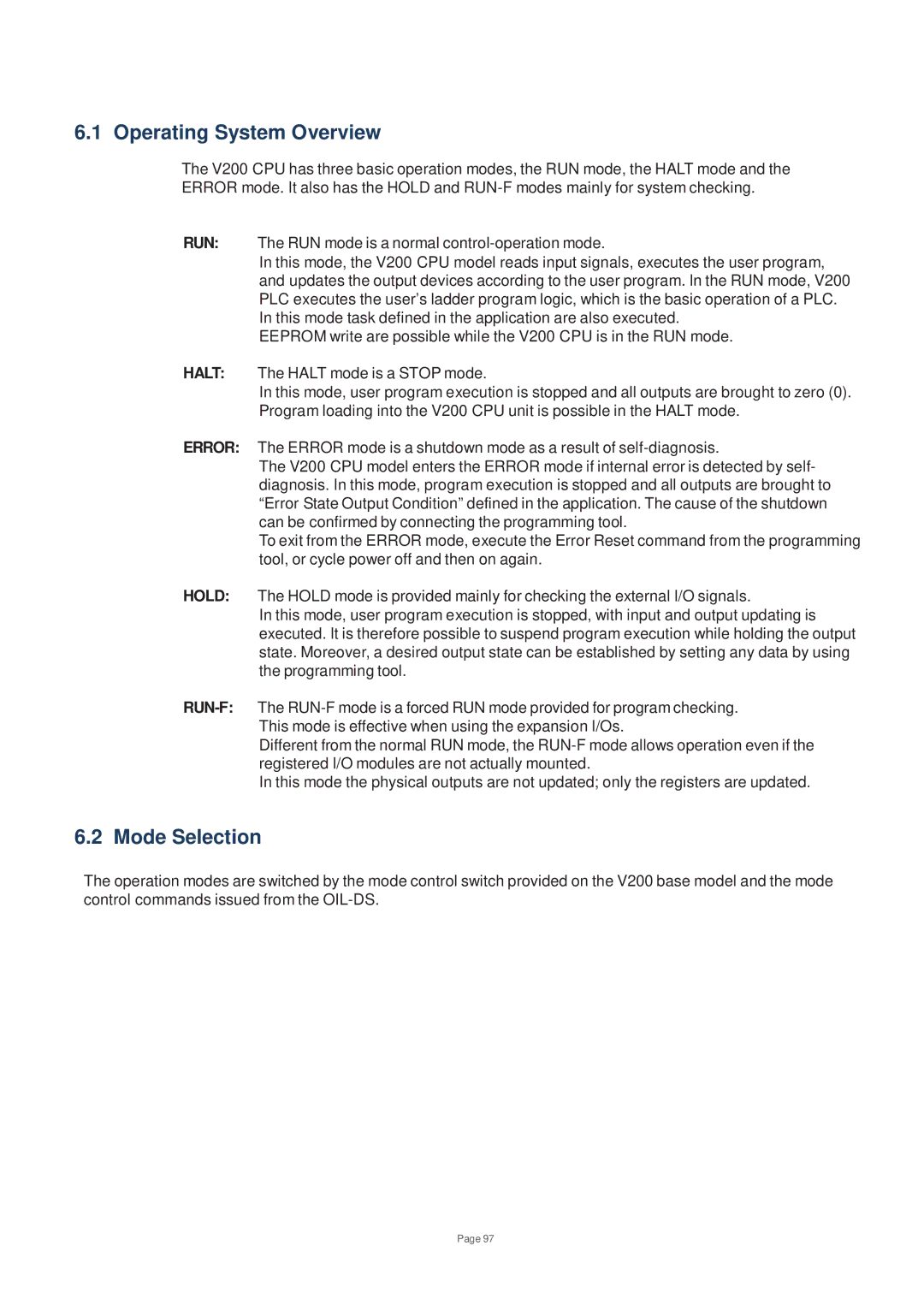6.1 Operating System Overview
The V200 CPU has three basic operation modes, the RUN mode, the HALT mode and the ERROR mode. It also has the HOLD and
RUN: The RUN mode is a normal
In this mode, the V200 CPU model reads input signals, executes the user program, and updates the output devices according to the user program. In the RUN mode, V200 PLC executes the user’s ladder program logic, which is the basic operation of a PLC. In this mode task defined in the application are also executed.
EEPROM write are possible while the V200 CPU is in the RUN mode.
HALT: The HALT mode is a STOP mode.
In this mode, user program execution is stopped and all outputs are brought to zero (0). Program loading into the V200 CPU unit is possible in the HALT mode.
ERROR: The ERROR mode is a shutdown mode as a result of
The V200 CPU model enters the ERROR mode if internal error is detected by self- diagnosis. In this mode, program execution is stopped and all outputs are brought to “Error State Output Condition” defined in the application. The cause of the shutdown can be confirmed by connecting the programming tool.
To exit from the ERROR mode, execute the Error Reset command from the programming tool, or cycle power off and then on again.
HOLD: The HOLD mode is provided mainly for checking the external I/O signals.
In this mode, user program execution is stopped, with input and output updating is executed. It is therefore possible to suspend program execution while holding the output state. Moreover, a desired output state can be established by setting any data by using the programming tool.
Different from the normal RUN mode, the
In this mode the physical outputs are not updated; only the registers are updated.
6.2 Mode Selection
The operation modes are switched by the mode control switch provided on the V200 base model and the mode control commands issued from the
Page 97
